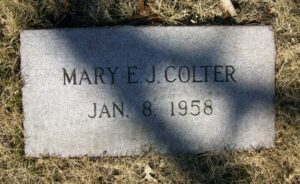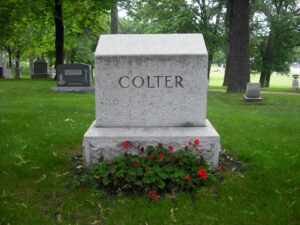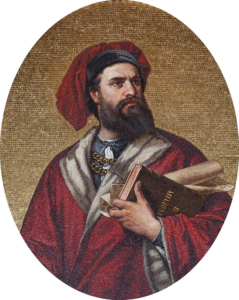 On this day in 1324 merchant traveler Marco Polo died at his home in Venice at the age of 69. Born 0n 16 September 1254 in Venice, possibly in the former contrada of San Giovanni Crisostomo. His travels are recorded in Livres des merveilles du monde, a book which did much to introduce Europeans to Central Asia and China. Polo learned the mercantile trade from his father and uncle, Niccolò and Maffeo, who travelled through Asia, and apparently met Kublai Khan. The three of them embarked on an epic journey to Asia, returning after 24 years to find Venice at war with Genoa; Marco was imprisoned, and dictated his stories to a cellmate. He was released in 1299, became a wealthy merchant, married and had three children. Polo was not the first European to reach China, but he was the first to leave a detailed chronicle of his experience. Polo influenced European cartography, leading to the introduction of the Fra Mauro map.
On this day in 1324 merchant traveler Marco Polo died at his home in Venice at the age of 69. Born 0n 16 September 1254 in Venice, possibly in the former contrada of San Giovanni Crisostomo. His travels are recorded in Livres des merveilles du monde, a book which did much to introduce Europeans to Central Asia and China. Polo learned the mercantile trade from his father and uncle, Niccolò and Maffeo, who travelled through Asia, and apparently met Kublai Khan. The three of them embarked on an epic journey to Asia, returning after 24 years to find Venice at war with Genoa; Marco was imprisoned, and dictated his stories to a cellmate. He was released in 1299, became a wealthy merchant, married and had three children. Polo was not the first European to reach China, but he was the first to leave a detailed chronicle of his experience. Polo influenced European cartography, leading to the introduction of the Fra Mauro map.
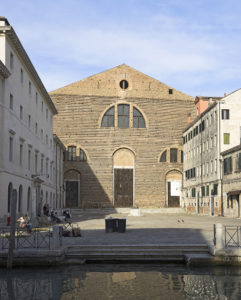 The Final Footprint – Due to the Venetian law stating that the day ends at sunset, the exact date of Marco Polo’s death cannot be determined, but according to some scholars it was between the sunsets of January 8 and 9, 1324. Biblioteca Marciana, which holds the original copy of his testament, dates the testament in January 9, 1323, and gives the date of his death at some time in June 1324. Polo was either entombed in the San Lorenzo church in the sestiere of Castello (Venice), or perhaps in the no longer extant San Sebastiano in Venice.
The Final Footprint – Due to the Venetian law stating that the day ends at sunset, the exact date of Marco Polo’s death cannot be determined, but according to some scholars it was between the sunsets of January 8 and 9, 1324. Biblioteca Marciana, which holds the original copy of his testament, dates the testament in January 9, 1323, and gives the date of his death at some time in June 1324. Polo was either entombed in the San Lorenzo church in the sestiere of Castello (Venice), or perhaps in the no longer extant San Sebastiano in Venice.
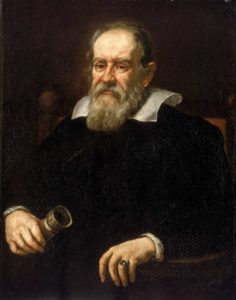 On this day in 1642, astronomer, physicist, engineer, and polymath Galileo Galilei died in Arcetri, Grand Duchy of Tuscany, Italy at the age of 77. Born on 15 February 1564 in Pisa (then part of the Duchy of Florence), Italy. Galileo is perhaps the father of observational astronomy, the father of modern physics, the father of the scientific method, and the father of modern science.
On this day in 1642, astronomer, physicist, engineer, and polymath Galileo Galilei died in Arcetri, Grand Duchy of Tuscany, Italy at the age of 77. Born on 15 February 1564 in Pisa (then part of the Duchy of Florence), Italy. Galileo is perhaps the father of observational astronomy, the father of modern physics, the father of the scientific method, and the father of modern science.
His contributions to observational astronomy include the telescopic confirmation of the phases of Venus, the observation of the four largest satellites of Jupiter, the observation of Saturn and the analysis of sunspots.
Galileo’s championing of heliocentrism and Copernicanism was controversial during his lifetime, when most subscribed to either geocentrism or the Tychonic system. He met with opposition from astronomers, who doubted heliocentrism because of the absence of an observed stellar parallax. The matter was investigated by the Roman Inquisition in 1615, which concluded that heliocentrism was “foolish and absurd in philosophy, and formally heretical since it explicitly contradicts in many places the sense of Holy Scripture.” Galileo later defended his views in Dialogue Concerning the Two Chief World Systems (1632), which appeared to attack Pope Urban VIII and thus alienated him and the Jesuits, who had both supported Galileo up until this point. He was tried by the Inquisition, found “vehemently suspect of heresy”, and forced to recant. He spent the rest of his life under house arrest. While under house arrest, he wrote Two New Sciences, in which he summarized work he had done some forty years earlier on the two sciences now called kinematics and strength of materials.
The Final Footprint
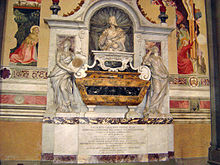
The Grand Duke of Tuscany, Ferdinando II, wished to bury him in the main body of the Basilica of Santa Croce, next to the tombs of his father and other ancestors, and to erect a marble mausoleum in his honour. These plans were dropped, however, after Pope Urban VIII and his nephew, Cardinal Francesco Barberini, protested, because Galileo had been condemned by the Catholic Church for “vehement suspicion of heresy”. He was instead buried in a small room next to the novices’ chapel at the end of a corridor from the southern transept of the basilica to the sacristy. He was reburied in the main body of the basilica in 1737 after a monument had been erected there in his honour; during this move, three fingers and a tooth were removed from his remains. One of these fingers, the middle finger from Galileo’s right hand, is currently on exhibition at the Museo Galileo in Florence, Italy.
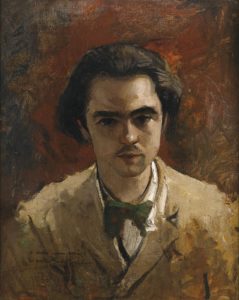 On this day in 1896, French poet associated with the Symbolist movement, Paul Verlaine died in Paris at the age of 51. He is considered one of the greatest representatives of the fin de siècle in international and French poetry. One of my favorite poets. Verlaine married Mathilde Mauté de Fleurville but later left her and their son to begin a love affair with the poet Arthur Rimbaud. The French painter Henri Fantin-Latour depicted Rimbaud and Verlaine in his 1872 painting Around the Table (Writers). Born Paul-Marie Verlaine on 30 March 1844 in Metz, France.
On this day in 1896, French poet associated with the Symbolist movement, Paul Verlaine died in Paris at the age of 51. He is considered one of the greatest representatives of the fin de siècle in international and French poetry. One of my favorite poets. Verlaine married Mathilde Mauté de Fleurville but later left her and their son to begin a love affair with the poet Arthur Rimbaud. The French painter Henri Fantin-Latour depicted Rimbaud and Verlaine in his 1872 painting Around the Table (Writers). Born Paul-Marie Verlaine on 30 March 1844 in Metz, France. 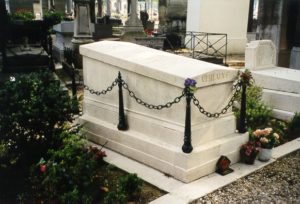
The Final Footprint – Verlaine was buried in the Cimetière des Batignolles (he was first buried in the 20th division, but his grave was moved to the 11th division – on the round about, a much better location – when the Boulevard Périphérique was built). Other notable final footprints at Batignolles inlclude; Léon Bakst, André Breton, Cora Pearl, and Édouard Vuillard.
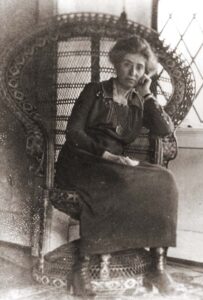 On this day in 1958 architect and designer Mary Colter died in Santa Fe, aged 88. Born Mary Elizabeth Jane Colter on 4 April 1869 in Pittsburgh.
On this day in 1958 architect and designer Mary Colter died in Santa Fe, aged 88. Born Mary Elizabeth Jane Colter on 4 April 1869 in Pittsburgh.
She was one of the very few female American architects in her day. She was the designer of many landmark buildings and spaces for the Fred Harvey Company and the Santa Fe Railroad, notably in Grand Canyon National Park. Her work had enormous influence as she helped to create a style, blending Spanish Colonial Revival and Mission Revival architecture with Native American motifs and Rustic elements, that became popular throughout the Southwest. Colter was a perfectionist, who spent a lifetime advocating and defending her aesthetic vision in a largely male-dominated field.
Colter retired to Santa Fe, in 1948. She donated her collection of Native American pottery and Indian relics to Mesa Verde National Park. Four of her Grand Canyon National Park buildings are protected within the Mary Jane Colter National Historic Landmark District.
The Final Footprint
Oakland Cemetery in Saint Paul, Ramsey County, Minnesota
#RIP #OTD in 1963 Surrealist artist and poet (Faut dire c’qui est) Kay Sage died from a gunshot wound to the heart in Woodbury, Connecticut, aged 64. Cremated remains scattered with those of her husband Yves Tanguy on the beach at Douarnenez in Brittany.
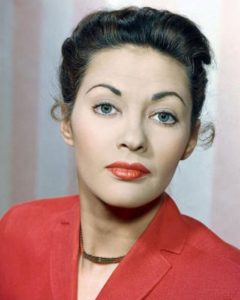 On this day in 2007, actress, dancer, and singer Yvonne De Carlo died of heart failure in Los Angeles at the age of 84. Born Margaret Yvonne Middleton on September 1, 1922 in Vancouver. A brunette with blue-grey eyes, she became an internationally famous Hollywood film star in the 1940s and 1950s, made several recordings, and later acted on television and stage.
On this day in 2007, actress, dancer, and singer Yvonne De Carlo died of heart failure in Los Angeles at the age of 84. Born Margaret Yvonne Middleton on September 1, 1922 in Vancouver. A brunette with blue-grey eyes, she became an internationally famous Hollywood film star in the 1940s and 1950s, made several recordings, and later acted on television and stage.
By the early 1940s, she and her mother had moved to Los Angeles, where De Carlo participated in beauty contests and worked as a dancer in nightclubs. In 1942, she signed a three-year contract with Paramount Pictures, where she was given uncredited bit parts in important films and was intended to replace Dorothy Lamour. Paramount loaned her out to Republic Pictures for her first credited role in a feature film, Wah-Tah in the independent production Deerslayer (1943).
She obtained her breakthrough role in Salome, Where She Danced (1945), a Universal Pictures release produced by Walter Wanger, who described her as “the most beautiful girl in the world.” The film’s publicity and success turned her into a star, and she signed a five-year contract with Universal. From then on, Universal starred her in its lavish Technicolor productions, such as Frontier Gal (1945), Song of Scheherazade (1947), and Slave Girl (1947). Cameramen voted her “Queen of Technicolor” three years in a row. Tired of being typecast as exotic women, her first serious dramatic performances were featured in two films noir, Brute Force (1947) and Criss Cross (1949).
The first American film star to visit Israel, De Carlo received further recognition as an actress for her work in the British comedies Hotel Sahara (1951) and The Captain’s Paradise (1953). Her career reached its peak when eminent producer-director Cecil B. DeMille cast her as Moses’ Midianite wife, Sephora, her most prominent role, in his biblical epic The Ten Commandments (1956), which was immensely successful at the box office and remains an annual tradition on television. Her success continued with starring roles in Flame of the Islands (1956), Death of a Scoundrel (1956), Band of Angels (1957), and The Sword and the Cross (1958), in which she portrayed Mary Magdalene. She also accepted supporting roles in McLintock! (1963) and A Global Affair (1964).
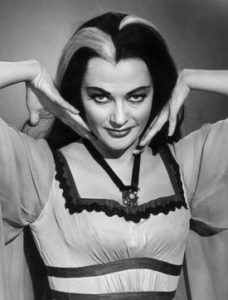 She gained a new generation of fans as a star of the CBS sitcom The Munsters (1964–1966), playing Herman Munster’s glamorous vampire wife, Lily, a role she reprised in the feature film Munster, Go Home! (1966) and the television film The Munsters’ Revenge (1981). In 1971, she played Carlotta Campion and introduced the popular song “I’m Still Here” in the Broadway production of the Stephen Sondheim musical Follies. Yvonne, her best-selling autobiography, was published in 1987. A stroke survivor, De Carlo died of heart failure in 2007. She was awarded two stars on the Hollywood Walk of Fame for her contributions to motion pictures and television.
She gained a new generation of fans as a star of the CBS sitcom The Munsters (1964–1966), playing Herman Munster’s glamorous vampire wife, Lily, a role she reprised in the feature film Munster, Go Home! (1966) and the television film The Munsters’ Revenge (1981). In 1971, she played Carlotta Campion and introduced the popular song “I’m Still Here” in the Broadway production of the Stephen Sondheim musical Follies. Yvonne, her best-selling autobiography, was published in 1987. A stroke survivor, De Carlo died of heart failure in 2007. She was awarded two stars on the Hollywood Walk of Fame for her contributions to motion pictures and television.
De Carlo’s name was linked with a number of famous men through her career, including Howard Hughes, and Robert Stack. In 1947, she announced her engagement to actor Howard Duff, her co-star in Brute Force (1947) and Calamity Jane and Sam Bass (1949), but they never married. She was engaged three more times—to American stuntman Jock Mahoney, English photographer Cornel Lucas, and Scottish actor Richard Urquhart—but felt “trapped” whenever she looked at the engagement ring on her finger.
De Carlo met stuntman Robert Drew “Bob” Morgan (1915–1999) on the set of Shotgun in 1955. They met again, after the death of Morgan’s wife, on the set of The Ten Commandments in Egypt. They were married on November 21, 1955, at St. Stephen’s Episcopal Church in Reno, Nevada.
The Final Footprint
De Carlo was cremated.
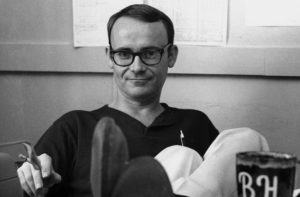 On this day in 2020, actor, screenwriter, and director Buck Henry died of a heart attack at Cedars-Sinai Medical Center in Los Angeles, at the age of 89. Born Henry Zuckerman on December 9, 1930 in New York City. Henry’s contributions to film included, his work as a co-director on Heaven Can Wait (1978) alongside Warren Beatty, and his work as a co-writer for Mike Nichols’s The Graduate (1967) and Peter Bogdanovich’s What’s Up, Doc? (1972). His career began on television with work on shows with Steve Allen in The New Steve Allen Show (1961). He co-created Get Smart (1965–1970) with Mel Brooks. He later guest starred in such popular shows as Murphy Brown, Hot in Cleveland, Will & Grace, and 30 Rock.
On this day in 2020, actor, screenwriter, and director Buck Henry died of a heart attack at Cedars-Sinai Medical Center in Los Angeles, at the age of 89. Born Henry Zuckerman on December 9, 1930 in New York City. Henry’s contributions to film included, his work as a co-director on Heaven Can Wait (1978) alongside Warren Beatty, and his work as a co-writer for Mike Nichols’s The Graduate (1967) and Peter Bogdanovich’s What’s Up, Doc? (1972). His career began on television with work on shows with Steve Allen in The New Steve Allen Show (1961). He co-created Get Smart (1965–1970) with Mel Brooks. He later guest starred in such popular shows as Murphy Brown, Hot in Cleveland, Will & Grace, and 30 Rock.
He was twice nominated for an Academy Award, for Best Adapted Screenplay for The Graduate (1967) and for Best Director for Heaven Can Wait (1978) alongside Warren Beatty.
Henry hosted NBC’s Saturday Night Live ten times between 1976 and 1980. It became a tradition during these years for Henry to host the final show of each season, beginning with the 1976–1977 season. Henry’s frequent host record was broken when Steve Martin made his 11th appearance as host of the show on the finale episode of the 1988–1989 season. During the October 30, 1976, episode, Buck Henry was injured in the forehead by John Belushi’s katana in the samurai sketch. Henry’s head began to bleed and he was forced to wear a large bandage on his forehead for the rest of the show. As a gag, the members of the SNL cast each wore a bandage on their foreheads as well.
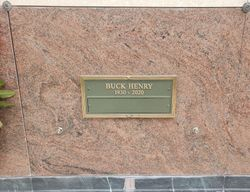 The Final Footprint
The Final Footprint
Forest Lawn Memorial Park, Hollywood Hills. Other notable final footprints at Hollywood Hills include; Gene Autry, Albert “Cubby” Broccoli, David Carradine, Scatman Crothers, Bette Davis, Sandra Dee, Ronnie James Dio, Michael Clarke Duncan, Carrie Fisher, Bobby Fuller, Andy Gibb, Michael Hutchence, Jill Ireland, Al Jarreau, Buster Keaton, Lemmy Kilmister, Jack LaLanne, Nicolette Larson, Liberace, Strother Martin, Jayne Meadows, Ricky Nelson, Bill Paxton, Brock Peters, Freddie Prinze, Lou Rawls, Debbie Reynolds, Telly Savalas, Lee Van Cleef, and Paul Walker.
Have you planned yours yet?
Follow TFF on twitter @RIPTFF


